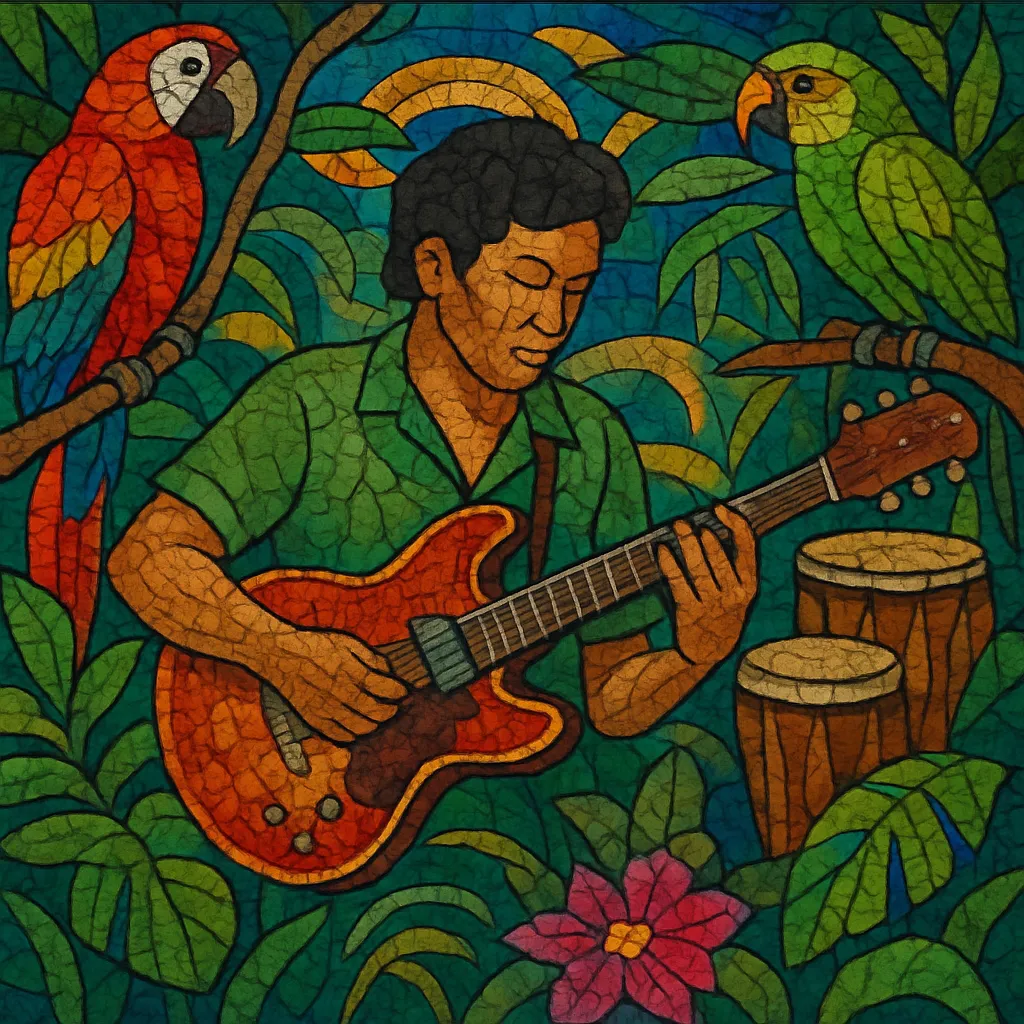Cumbia amazónica (also called cumbia selvática) is a Peruvian branch of cumbia that emerged in rainforest cities such as Iquitos, Pucallpa, and Tarapoto in the early 1970s.
It fuses the Colombian cumbia beat with electric guitars drenched in reverb, tremolo, wah‑wah, and fuzz, plus Farfisa-style organs, cowbell-driven percussion, and hypnotic minor-key vamps. Many tracks are instrumental or feature brief, chant-like vocals, evoking jungle imagery, river life, and local mythology.
The sound is simultaneously earthy and psychedelic: a steady 2/4 cumbia groove anchors swirling guitar lines and modal melodies, creating a trancey, dance-floor-ready atmosphere that became a defining tropical sound of Peru’s Amazon region.
Cumbia reached Peru via radio and records from Colombia in the 1960s. In the Amazon basin, local musicians adapted the cumbia rhythm to electric band formats, incorporating surf and psychedelic rock guitar timbres alongside Farfisa/vox-style organs. Groups from Iquitos, Pucallpa, and Tarapoto began shaping a distinctly rainforest sound often called cumbia amazónica or cumbia selvática.
By the early–mid 1970s, bands such as Juaneco y su Combo, Los Wembler’s de Iquitos, and Los Mirlos popularized the style nationally with instrumental hits and jungle-themed tunes. The music’s hypnotic minor-key riffs, cowbell-forward percussion, and echoing guitars made it a staple of dances and radio throughout Peru. The scene also intersected with Lima’s psychedelic cumbia movement (e.g., Los Destellos, Manzanita y su Conjunto). A tragic 1977 plane crash that killed several members of Juaneco y su Combo became a somber milestone in the genre’s history.
As Andean-inflected chicha rose and later romantic cumbia styles took over airwaves, cumbia amazónica’s mainstream profile dipped, yet its recordings continued to circulate regionally and via collectors. Its guitar language and organ textures quietly informed broader Peruvian cumbia and neighboring tropical scenes.
Reissues and compilations in the 2000s (and renewed touring by legacy bands) sparked international interest. Contemporary Peruvian acts and global producers drew on its sound, feeding into digital/nu-cumbia scenes and live revival groups. Today, cumbia amazónica is recognized as a cornerstone of Peru’s tropical music heritage and a key reference for psychedelic cumbia worldwide.


